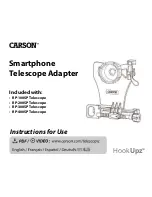
28
When an external source is connected, it is automatically used to heat the Li-ion battery
cells. The BMS detects whether power is available at the FASTON Heater power input. If
the user wants to use external power only, heating from terminal power must be disabled
(method 1) or method 2 must be used. This is to prevent the energy from the Li-ion battery
from being used when the external source is not present (e.g. a grid power failure)
5.3.2. Heating methods
There are three heating methods that can be used (or heating can be disabled):
1. Heat up before charging (default);
2. Keep at charge temperature by external source;
3. Keep at charge temperature source independent;
4. No heating.
Only one of them can be enabled and which method to use can be selected using the Be In
Charge App or Be In Charge Software
Method 1: Heat up before charging
If one or more cells are below 0°C and a charge current is detected, the disconnect device
will open the charge path, preventing the Li-ion battery from being charged. The power for
the heaters is then taken from the terminals, hence the charger supplies the power to heat
the cells. As long as there is charging current, the heaters must be used to keep the cells
above 0°C.
If a charger is used that can be regulated by the Li-ion battery, the charging path will remain
closed when a charging current is detected. If power is detected on the FASTON Heater
power input, it will use that power to heat up the cells to 0 °C before charging, not the
chargers power. However, in case of external power, method 2 or 3 are more appropriate to
use.
Method 2: Keep at Charge Temperature by external source
This method keeps the cell temperature above the allowable charging temperature of 0°C,
and uses power from the FASTON heater power input. If there is no external source available
and charging is detected with cells below 0°C, the Li-ion battery will behave as method 1.
Method 3: Keep at charge temperature source independent
This method keeps the cell temperature above 0°C from external power supply energy or the
Li-ion battery energy itself. If an external source is available, it will be used for heating. If the
external source is not present, energy from the Li-ion battery will be used to keep at 0°C. In









































